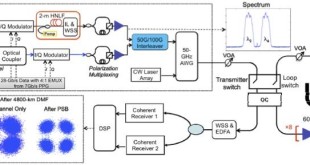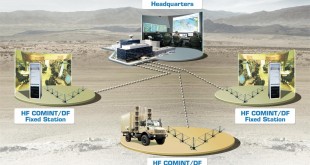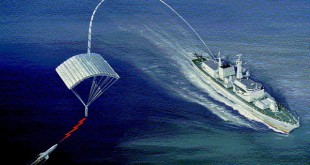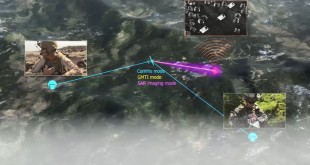U.S. military researchers are asking for industry’s help in developing a combination hybrid analog, digital, photonic, and electronic processor to help analyze RF and optical signals for situational awareness. The project seeks to enable U.S. and allied warfighters to understand in near-real-time all the waveform details, source type and class, …
Read More »DARPA exploring the convergence of biology and electromagnetics for military communications and sensing
Radio frequency waves (RF) are electromagnetic waves between the frequencies of 3 kilohertz to 300 gigahertz, used in radio, cellphones, wi-fi, radar, GPS, and many other systems. While humans have used RF technology to communicate for over 100 years, no living organism has ever been observed using RF to communicate …
Read More »DARPA’s Video Synthetic Aperture Radar (ViSAR) successfully demonstrated a new sensor that can capture real-time video through clouds for engaging moving ground targets from the aircraft
Recent military conflicts have demonstrated the need for close air support from precision attack platforms (e.g., the AC-130 gunship) to support ground forces. These aircraft typically use IR sensors to engage moving ground targets, such as vehicles and dismounts. Under clear conditions, targets can be easily identified and effectively engaged. …
Read More »New HF COMINT systems are being introduced to intercept communications of militaries, terrorists, illegal immigrants, pirates and illegal fishermen
All modern forces depend on unimpeded access to, and use of, the EM spectrum in conducting military operations. Therefore, there is a requirement to gain and maintain an advantage in the electromagnetic spectrum by countering adversary’s systems and protecting one’s own systems. Adversary can disrupt and degrade the navigation systems …
Read More »New electronic components and materials for extreme environments like Hypersonic flight , Planetary exploration and Military Systems
“Electronics have dramatically changed the way we live, conduct business, communicate, and educate. Visions of the future foretell of ubiquitous computing and sensing. However, the environments in which electronics can reliably operate are limited. In consumer applications, typical operating temperatures range from -40° to 85°C. The “wider” military temperature range …
Read More »DARPA’s M3IC developing critical magnetic components for future AESA based radars, communication and electronic warfare systems
Next-generation radar systems are critical to providing situational awareness of the entire networked battlefield. Active Electronically Steered Array (AESA) antennas have revolutionized the performance of modern radars, communication and electronic warfare systems by greatly reducing the maintenance costs and failure rates, enhancing scanning speed and accuracy, more resistant to interference …
Read More »US and UK Airforce deploying Next Generation Identification Friend or Foe (IFF) technology for rapid engagement of enemy aircraft, and reduce risk to friendly aircraft.
IFF (Identification Friend or Foe) is the military designation of the Air Traffic Control (ATC) System that is used to identify and track military aircraft. It enables military and civilian air traffic control interrogation systems to identify aircraft, vehicles or forces as friendly and to determine their bearing and range …
Read More »New class of Electronics: Biodegradable, Transient, Self Destructing for Security and Biomedical applications
Consumer electronics constitute a rapidly increasing source of waste. Cell phones, tablets and the like are typically made of non-renewable, non-biodegradable, partly environmentally toxic materials. A report from United Nations University (UNU) found that the world produced 41.8 million metric tons of e-waste in 2014 – an amount that would …
Read More »Automated AI based soft kill countermeasures including electronic attack and cyber weapons will protect Warships from future missile threats
Naval Warships now faces wide spectrum of threats from hypersonic missiles, ballistic and cruise missiles, cavitating torpedoes, rail guns, lasers and UAVs. Anti-Ship Missiles are guided missiles most of them of the sea skimming variety, and many use a combination of inertial guidance and active radar homing. A good number …
Read More »DARPA drones shall carry mission adaptable payloads to switch missions mid flight from intelligence, command and control, networking to combat operations
UAS are used as force multipliers. They provide real-time Intelligence, Surveillance and Reconnaissance (ISR) information on remote targets and areas, as well as damage assessment and electronic warfare. They are also commonly used in border control as well as anti-terror operations. Today, unmanned aerial systems (UAS) typically require multiple payloads with dedicated components, …
Read More » International Defense Security & Technology Your trusted Source for News, Research and Analysis
International Defense Security & Technology Your trusted Source for News, Research and Analysis









